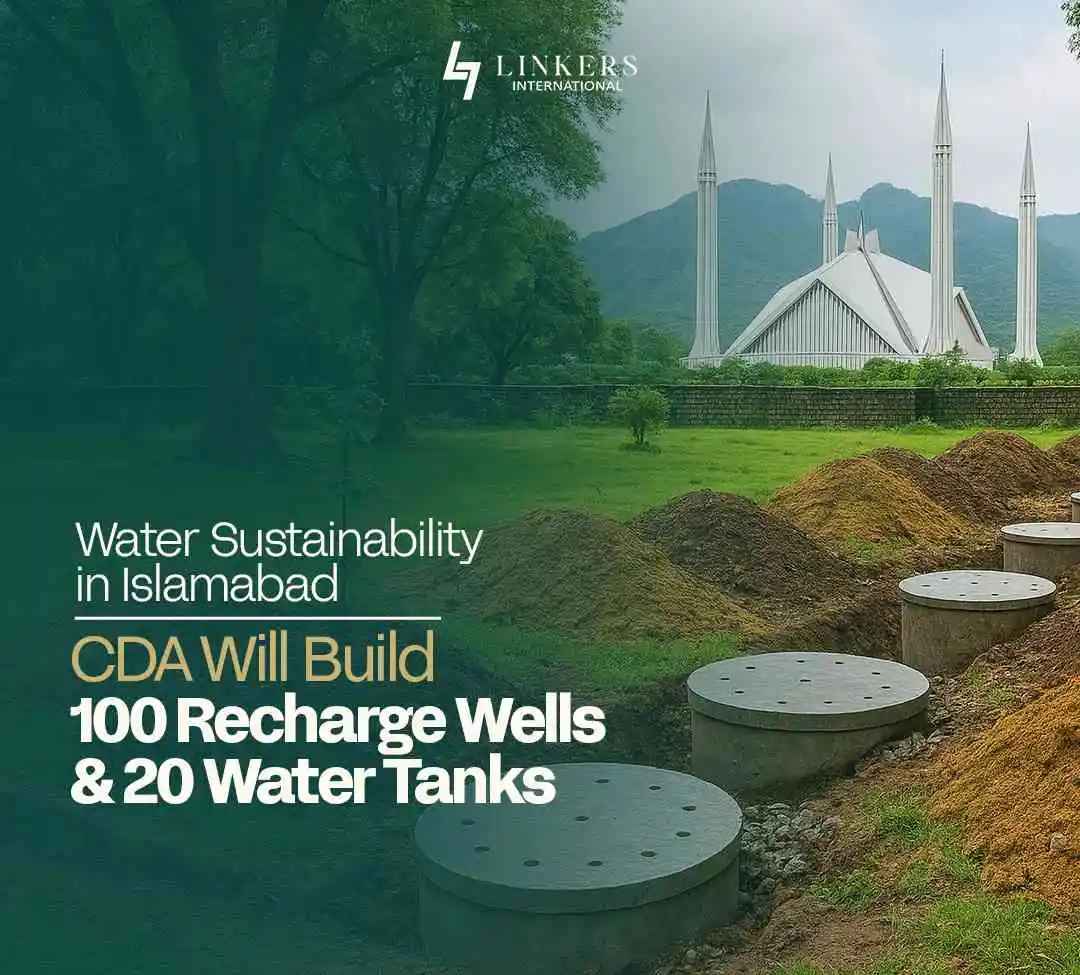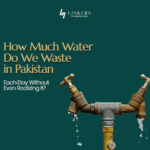At Linkers International, we’ve always emphasized the environmental and social responsibility of the developers, as in our very recent blog, we discussed the critical role of groundwater recharge wells, highlighting how they not only replenish aquifers but also prevent urban flooding, manage stormwater, and support sustainable urban development.
We’re glad to see the Capital Development Authority (CDA) taking action by planning the construction of new water infrastructure. CDA’s 100 Recharge Wells and 20 water tanks will address Islamabad’s water challenges and facilitate the citizens.
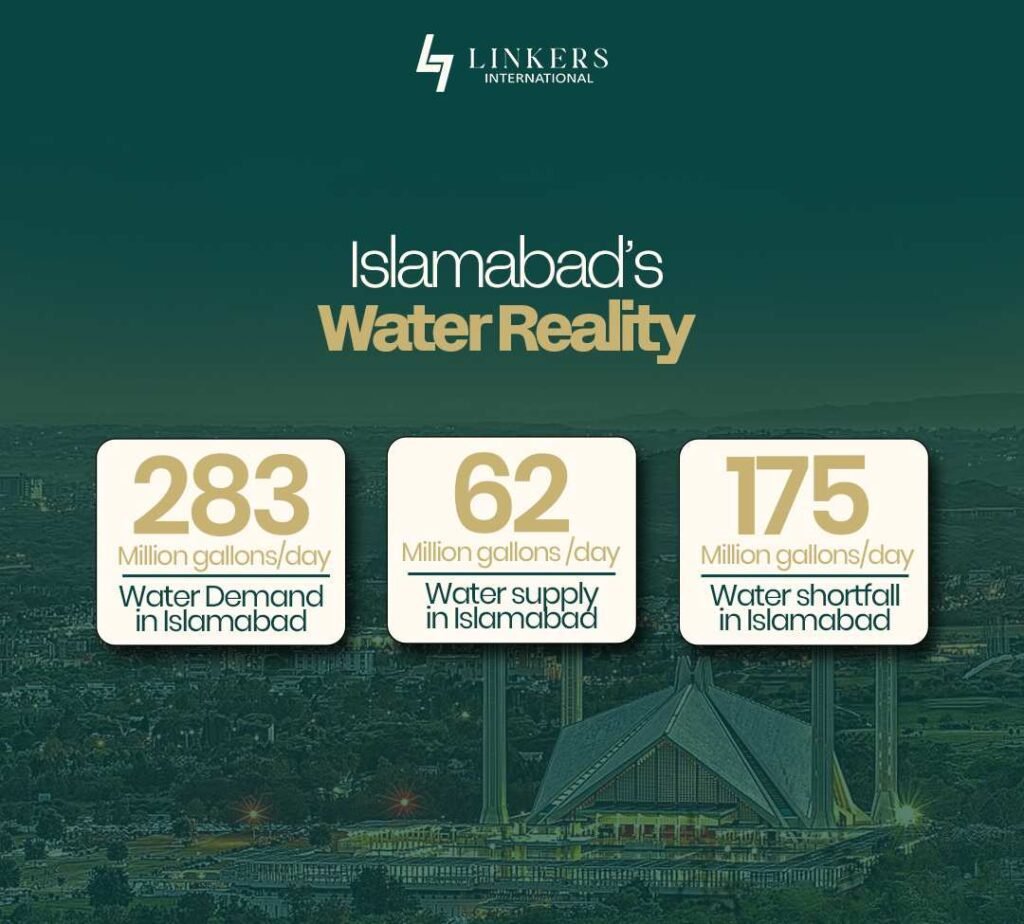
As Islamabad grows and spreads, the water demand is skyrocketing, putting immense pressure on the capital’s aging water infrastructure. With a daily shortfall of nearly 175 million gallons, Islamabad faces a serious water crisis.
- Water Demand in Islamabad: 283 million gallons per day
- Water supply in Islamabad: 62 million gallons per day
- Water shortfall in Islamabad: 175 million gallons per day
In response, the Capital Development Authority (CDA) has taken a new initiative to build 20 water tanks and 100 recharge wells, primarily in the Margalla foothills, a move that could play a vital role in reshaping the city’s water management system.
Let’s see how this is going to benefit Islamabad:
How CDA’s 100 Recharge Wells Help End the Water Crisis in Islamabad?
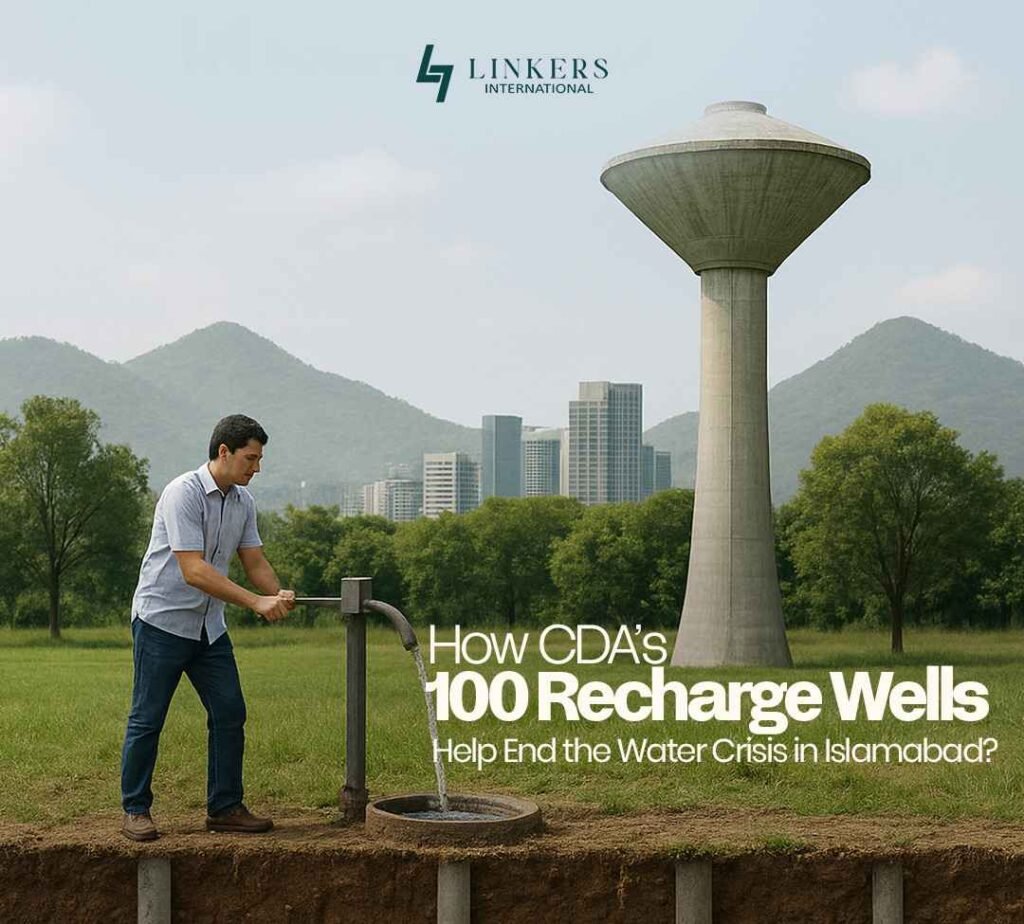
Recharge wells are not new to sustainable urban planning, but they’ve not been fully used in Islamabad’s past policies. These wells are designed to capture rainwater and storm runoff, allowing it to seep into the ground, replenishing depleted aquifers.
CDA’s 100 Recharge Wells is the new project in Islamabad, each 15 feet wide and 25 feet deep, strategically located to maximize rainwater absorption, particularly in areas vulnerable to flooding and water runoff.
Boost Groundwater Levels: Recharge wells help replenish underground aquifers by allowing rainwater and runoff to seep back into the ground, raising the water table.
Reduce Over-Extraction Impact: By naturally refilling groundwater, recharge wells ease the pressure on boreholes and wells, preventing further depletion.
Prevent Urban Flooding: Recharge wells absorb excess rainwater during heavy downpours, reducing surface runoff and minimizing flooding risks.
Improve Water Quality: As water filters through soil layers in recharge wells, pollutants get naturally removed, leading to cleaner groundwater sources.
Support Sustainable Water Supply: By enhancing groundwater recharge, these wells contribute to a long-term, sustainable water supply for residential, commercial, and agricultural use.
How Water Tanks Work in CDA’s Water Sustainability Plan?
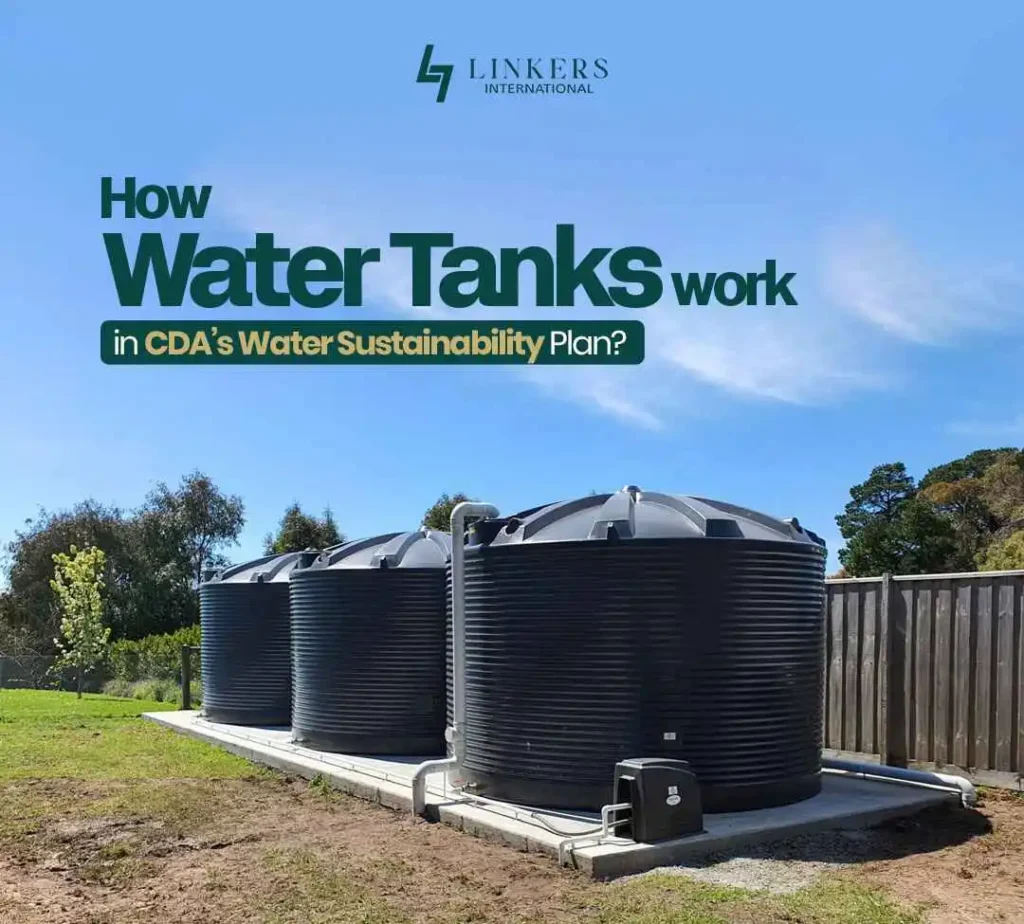
Alongside CDA’s 100 Recharge Wells, the new project also includes 20 large water tanks with a storage capacity ranging between 200,000 and 500,000 gallons per day. Many of these tanks will be built near natural or artificial lakes, improving their efficiency and accessibility.
These tanks will serve two key purposes:
- Short-term storage for the daily municipal supply
- Support during peak demand and emergencies
Over time, this infrastructure could help create a buffer system for water distribution, reducing pressure on primary sources and improving service reliability.
While CDA’s 100 Recharge Wells and tanks are essential steps toward self-sufficiency, Islamabad still needs a long-term water supply source to meet rising demand. To address this, the government is working on a major pipeline project from Ghazi Barotha and Tarbela, aimed at delivering 100 million gallons of water per day to the twin cities.
This mega project is expected to be completed in two years and could significantly reduce the shortfall, especially when combined with improved conservation and water management measures.
What’s Fueling Islamabad’s Water Crisis?
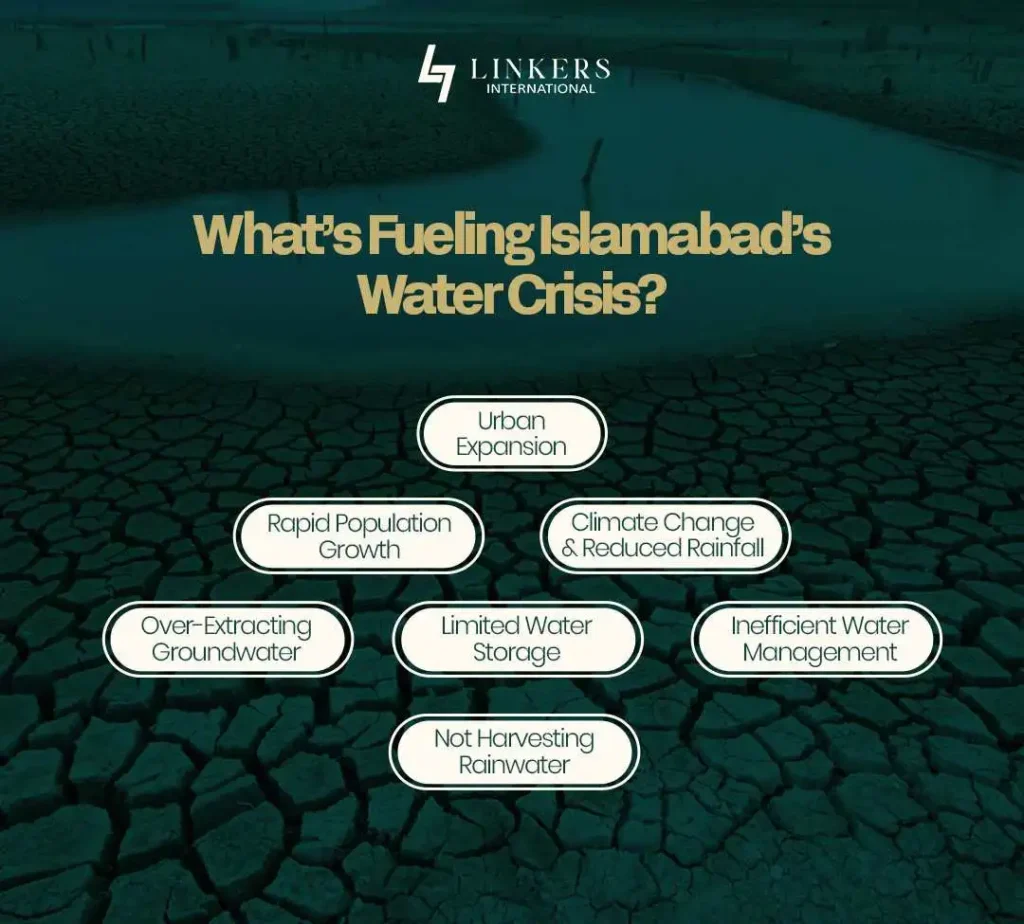
Islamabad’s total daily water demand stands at 283 million gallons per day (MGD). However, its main water sources, Simly Dam and Khanpur Dam, together provide just 62 MGD. That leaves the city with a gap of over 175 MGD every single day.
Water shortage in the city is becoming a pressing issue as the capital struggles to meet the growing demand. Several key factors contribute to this crisis, impacting both the availability and the quality of water for residents.
- Rapid Population Growth: The capital’s population is expanding quickly, increasing water demand beyond current supply capacity.
- Urban Expansion: New housing schemes and commercial developments put extra strain on existing water infrastructure.
- Over-Extraction of Groundwater: Excessive use of boreholes is lowering the water table, making water harder to access.
- Inefficient Water Management: Leakages, outdated pipelines, and poor maintenance cause significant water loss.
- Climate Change & Reduced Rainfall: Changing weather patterns mean less rain to replenish reservoirs and groundwater.
- Limited Water Storage & Recharge Systems: Lack of adequate water tanks and recharge wells limits the ability to store and replenish water sources.
- Underutilization of Rainwater Harvesting: Insufficient adoption of rainwater harvesting systems misses a vital opportunity to capture and reuse natural rainfall.
Need for Public Awareness & Policies
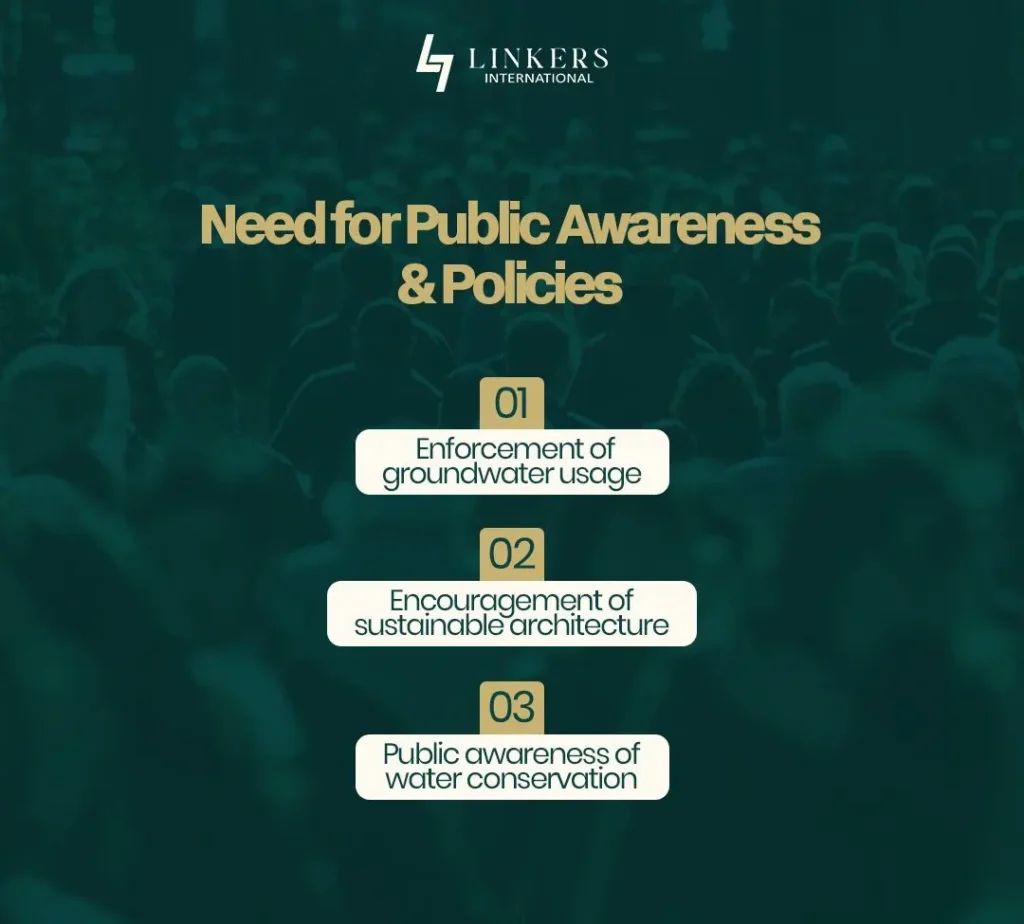
After three decades of limited progress, Islamabad is finally seeing concrete steps toward solving its water crisis. But infrastructure alone isn’t enough. A multi-pronged approach is needed, including:
- Public awareness of water conservation
- Enforcement of groundwater usage policies
- Encouragement of sustainable architecture and development
As urban developers, planners, and real estate professionals, we must understand and support these initiatives. At Linker International, we will continue to advocate for sustainable urban solutions, including the use of recharge wells, rainwater harvesting, and eco-conscious planning, to ensure Islamabad remains a livable city for future generations.


